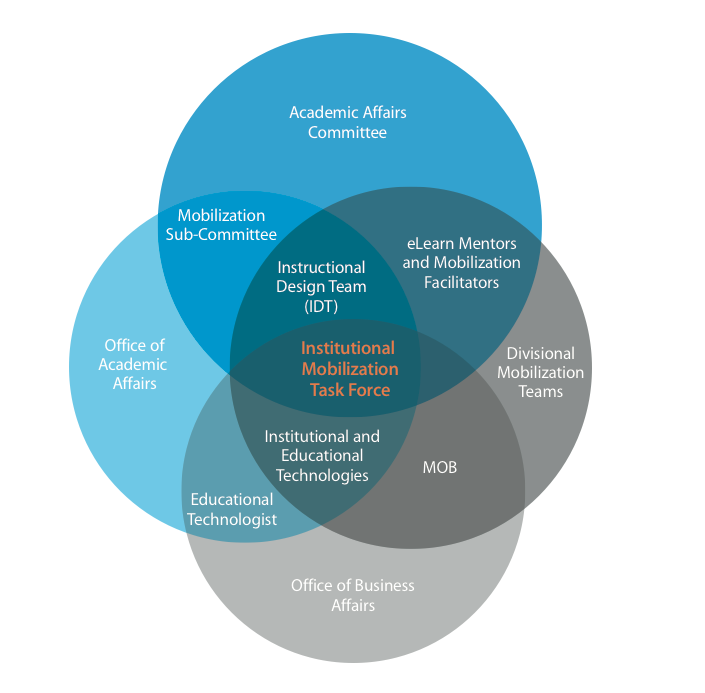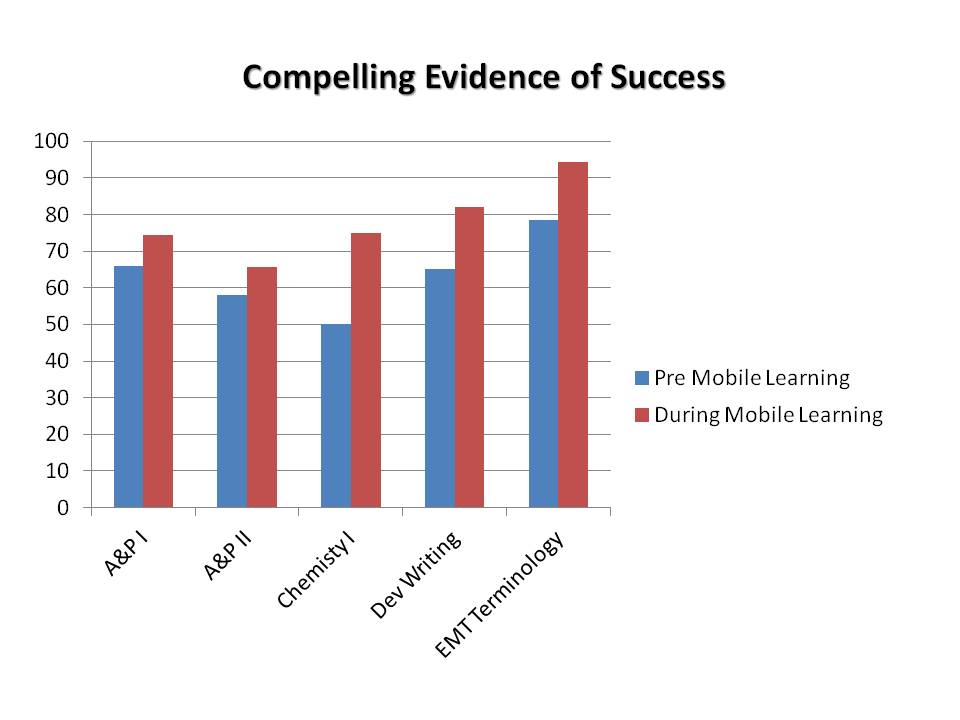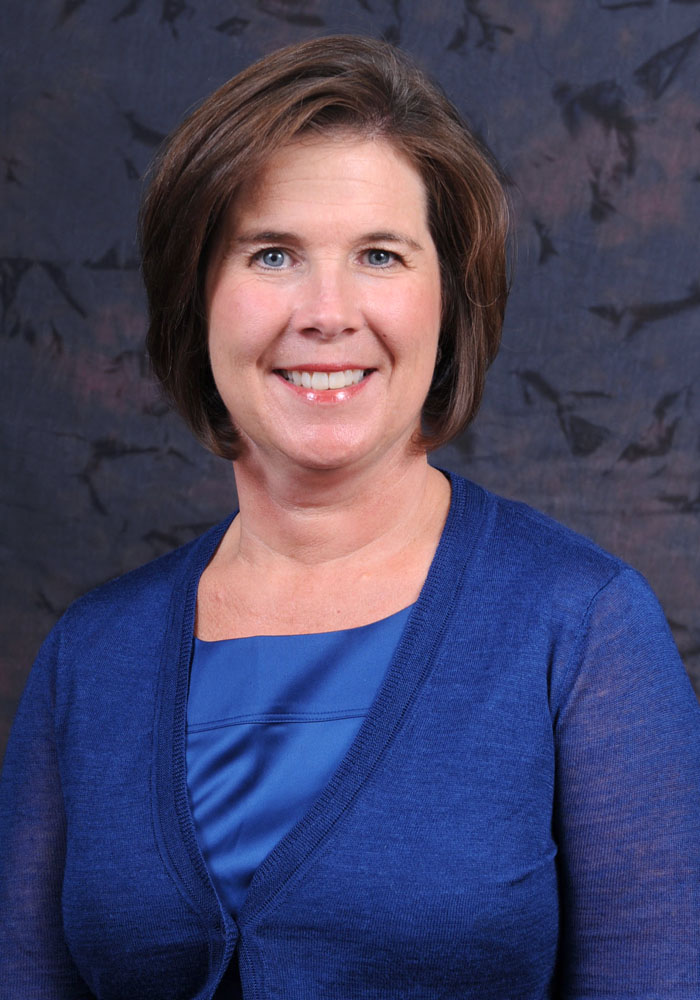Successfully Implementing Mobile Learning Across an Entire Campus
Published by: WCET | 10/23/2013
Tags: Collaboration/Community, Faculty, Mobile Learning, Outcomes, Teaching, Technology
Published by: WCET | 10/23/2013
Tags: Collaboration/Community, Faculty, Mobile Learning, Outcomes, Teaching, Technology
We better be paying attention to mobile learning. A short while ago, I asked Robbie Melton, the Tennessee Board of Regents’ (and WCET’s) “Appologist” about examples in her state of successful implementation of mobile learning on campus. She introduced me to our friends at Walters State Community College who agreed to write a series of three blogs about their experience. Thank you to Robbie, Lori, and the leaders at Walters State who will share their stories in a series of three blog postings.
Russ Poulin
About our College
Walters State Community College (WSCC) is a member of the Tennessee Board of Regents (TBR), the 6th largest system of higher education in the nation. We are a rural community college serving a 10 county region nestled in the foothills of the Great Smoky Mountains. We have a current enrollment of around 6,500 students on four campuses.
Walters State is a premier community college, committed to increasing educational attainment and workforce preparedness through excellence in teaching and service. WSCC is currently ranked as the 6th most tech-savvy college among midsized community colleges in the nation by eRepublic’s Center for Digital Education.
In October 2012, TBR in collaboration with WSCC’s Natural Science Division (NSCI) was named a recipient of the WCET Outstanding Work Award. This award recognizes innovative uses of educational technologies in higher education. In 2013 WSCC earned the distinction of being an Apple Distinguished Education Program.

Three Steps to Successfully Implementing Mobile Learning
If, your institution is considering mobile learning, please keep three things in mind:
The rewards your college will reap in better student engagement with content and gains in student learning outcome attainment are well worth the investment.
Strategic Planning Creates Your Road Map for Success
In spring 2011, the question at WSCC was not “why mobile learning?”; it was “why not?” Our faculty members wanted to better engage our millennial student population and due to generational gaps, it was frustrating them. I was searching, listening, and looking for the right thing that would aid faculty members in engaging their students.
Mobile learning made sense. Students were already on their mobile devices; why not put the educational content in their hands? It fit our faculty members’ desire to reach their students and engage them in learning anytime, anywhere. When the president announced we were going to go mobile with iPads, iPods and iPhones with our learning, there was palpable excitement in the air.
As we launched, an overall strategic plan was written for the academic mobile learning initiative (mEngage). Participation was and is voluntary. Any faculty member is able to receive an iPad as long as he or she is willing to write a mobile learning plan for how he or she will address and assess student learning outcomes in their courses. Two and a half years later 94% of faculty members have written plans, voluntarily.
Functional Units Must Communicate and Work Together
Mobilizing learning at the college has proven to be motivational for faculty, staff and students alike. Our faculty members now share in an open discourse about the art of teaching. Faculty members take every opportunity given to share their classroom best practices with each other as well as other higher education and K-12 colleagues.
In the two and a half years we have been involved in mobile learning, one of the most important functional and organizational changes that has taken place is the infrastructure for mobile learning support that has been created. Mobile Learning affects all aspects of your campus; and all aspects must be involved for success. Our president chairs the WSCC College-Wide Mobilization Task Force. This format provides a format for open discussion to see how mobilization initiatives effect and need support from different areas. There is also a Mobilization Sub-Committee, which is a faculty membership committee focused on evaluation of mobile learning plans and assessment of mobile learning throughout Academic Affairs. The complex structure of Mobile Learning at Walters State is best represented through a relationship diagram.
Professional Development for Faculty is Essential
Our mobile learning initiative has moved past its initial stages and has an infrastructure embedded within the college and Academic Affairs Division. There is a training structure through our Instructional Design Team (IDT), an assessment and evaluation structure through our Mobilization Sub-Committee, and a recognition structure through our Mobile Fellows Program. Through this structure within Academic Affairs, individual leaders are making their appearance across our institution.
Our IDT team is dedicated to identifying and training faculty and staff on new academic technology. The team is comprised of seven core members ranging from our Asst. Dean for Online instruction; a full-time faculty trainer; a cutting edge computer science faculty member and four instructional support specialists located across three campuses. Members of this team are also connected to mobile learning mentors throughout our academic divisions and campuses who offer just in time training and support.
Our Mobilization Sub Committee is an officially sanctioned college committee with faculty member selected and lead by the Asst. Dean for Online Instruction. This committee is focused on assessing and evaluating mobile learning plans and new initiatives as well as moving new mobile learning initiatives forward.
The WSCC Mobilization Sub-Committee has selected the first two Mobile Fellows. This program is designed to encourage faculty members to explore new methods to increase student classroom involvement using mobile devices and emerging technologies. Both faculty members presented to fellow faculty members during the college’s Inaugural Week in August as well as led trainings in how they have integrated mobile learning in their instruction. These faculty members also presented to the WSCC Foundation Executive Board in advance of our annual report, which happens to be focused on mobile learning.
We Have Many Successes to Report
Through mobilizing learning our institution has seen special needs students achieve acclimation into the classroom environment previously unattainable; made it possible for a cancer survivor to thank the researchers from St. Jude’s who helped her as a child; bridged the generation gap between students and faculty and also by seeing millennial faculty members mentor 40+ year veteran faculty members and re-invigorate teaching; watched student learning outcomes improve at unprecedented levels; saved thousands of dollars; developed our college’s app; flipped a good number of our classrooms instruction and implemented challenge based learning.
This graph depicts the gains we have seen in student learning assessment from pre-mobile learning initiatives in the blue to during our mobile learning initiatives in the red. We have experienced significant increases in student learning outcomes in demanding subjects from the sciences, developmental writing, and the emergency medical field. We are also seeing gains in student retention from beginning to end of semester.
We have also surveyed our students to understand their perspective of our mobile learning initiative. Our students believe the iPad makes classes more engaging and increases student learning. The students also agreed this device is a learning tool and should be treated as such. Our students find the vast majority of their work could be completed on the iPad. We see book bags getting lighter as these devices begin replacing heavy textbooks and laptop computers.
Mobilizing learning at our college has been a truly revolutionary experience for our faculty, staff and students. We began by imagining the possibilities and found our way to make it happen. 
Lori Campbell
Vice-President for Academic Affairs
Walters State Community College
Lori.Campbell@ws.edu
Watch for the next blog post from Walters State on training for mobile learning.
3 replies on “Successfully Implementing Mobile Learning Across an Entire Campus”
[…] « Successfully Implementing Mobile Learning Across an Entire Campus […]
[…] our Vice President of Academic Affairs shared with you how our East Tennessee community college was completely transformed by a mobile learning revolution and our Dean of Online Instruction outlined the faculty and staff […]
[…] our Vice President of Academic Affairs shared with you how our East Tennessee community college was completely transformed by a mobile learning revolution and our Dean of Online Instruction outlined the faculty and staff […]